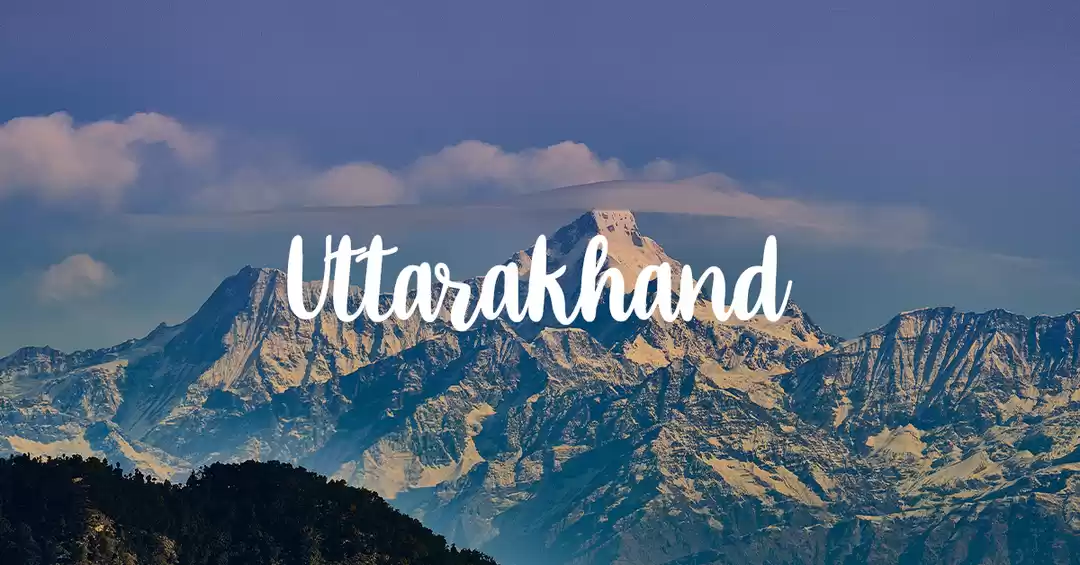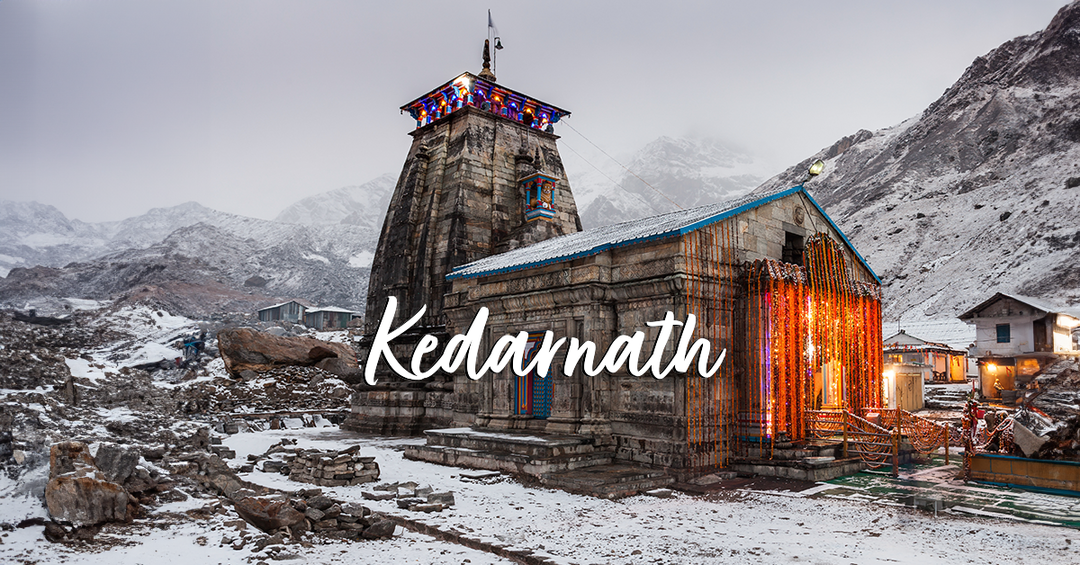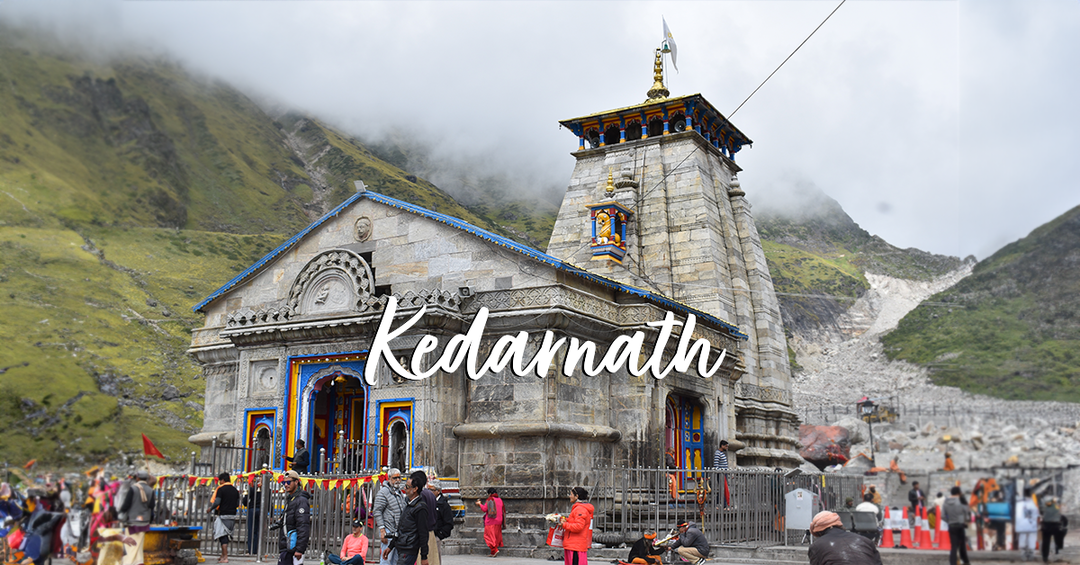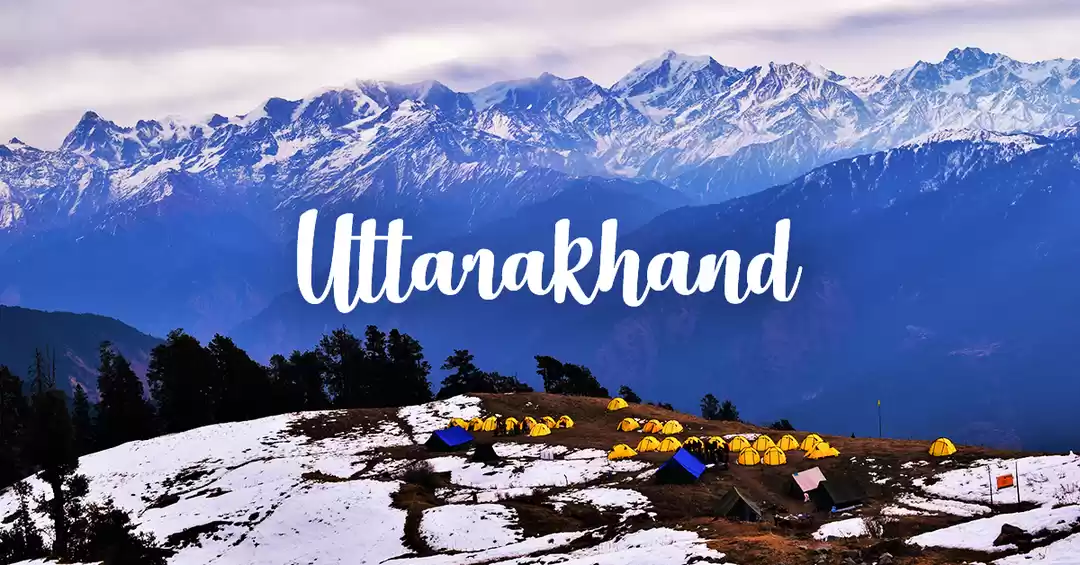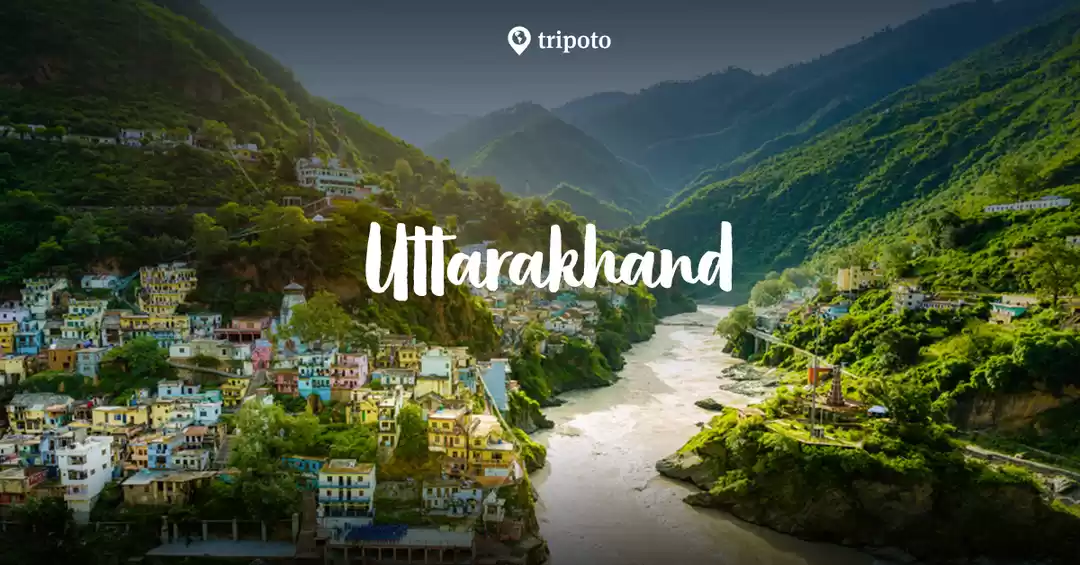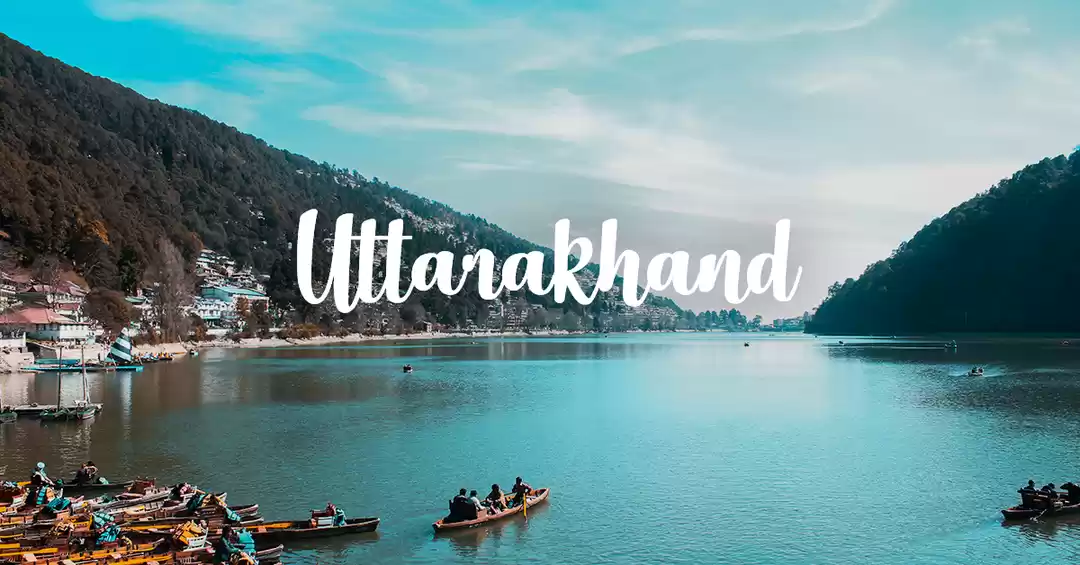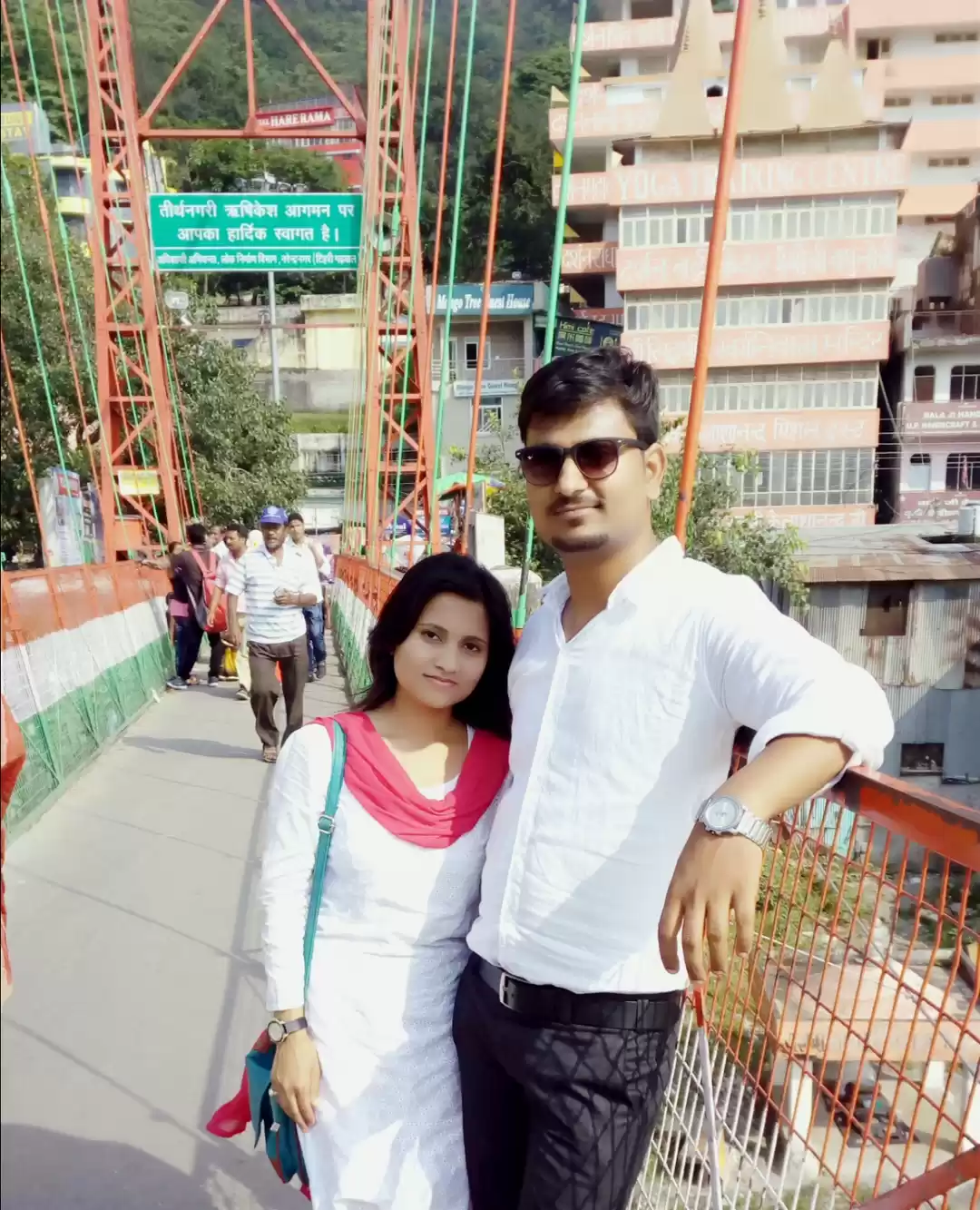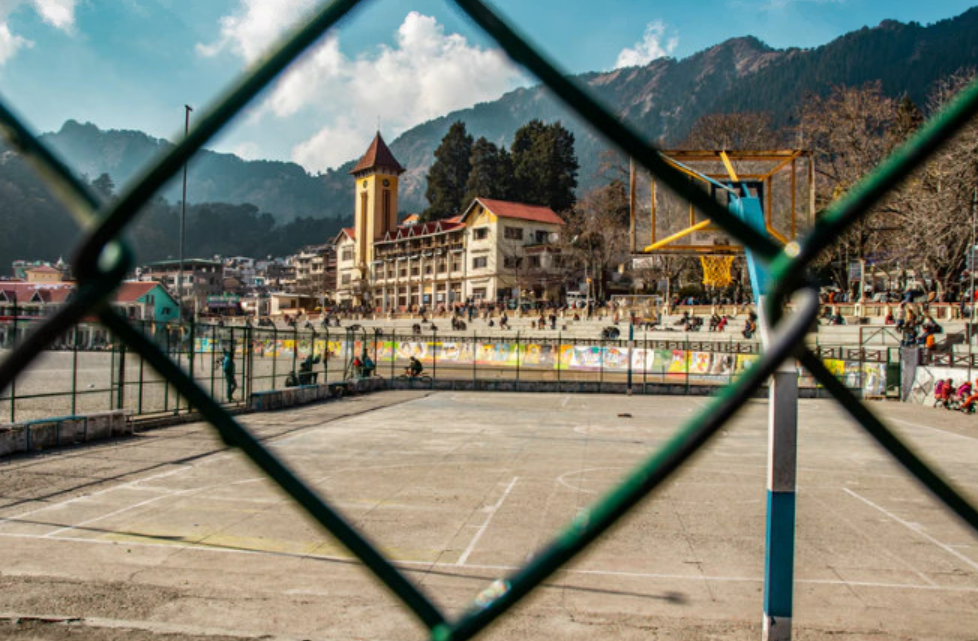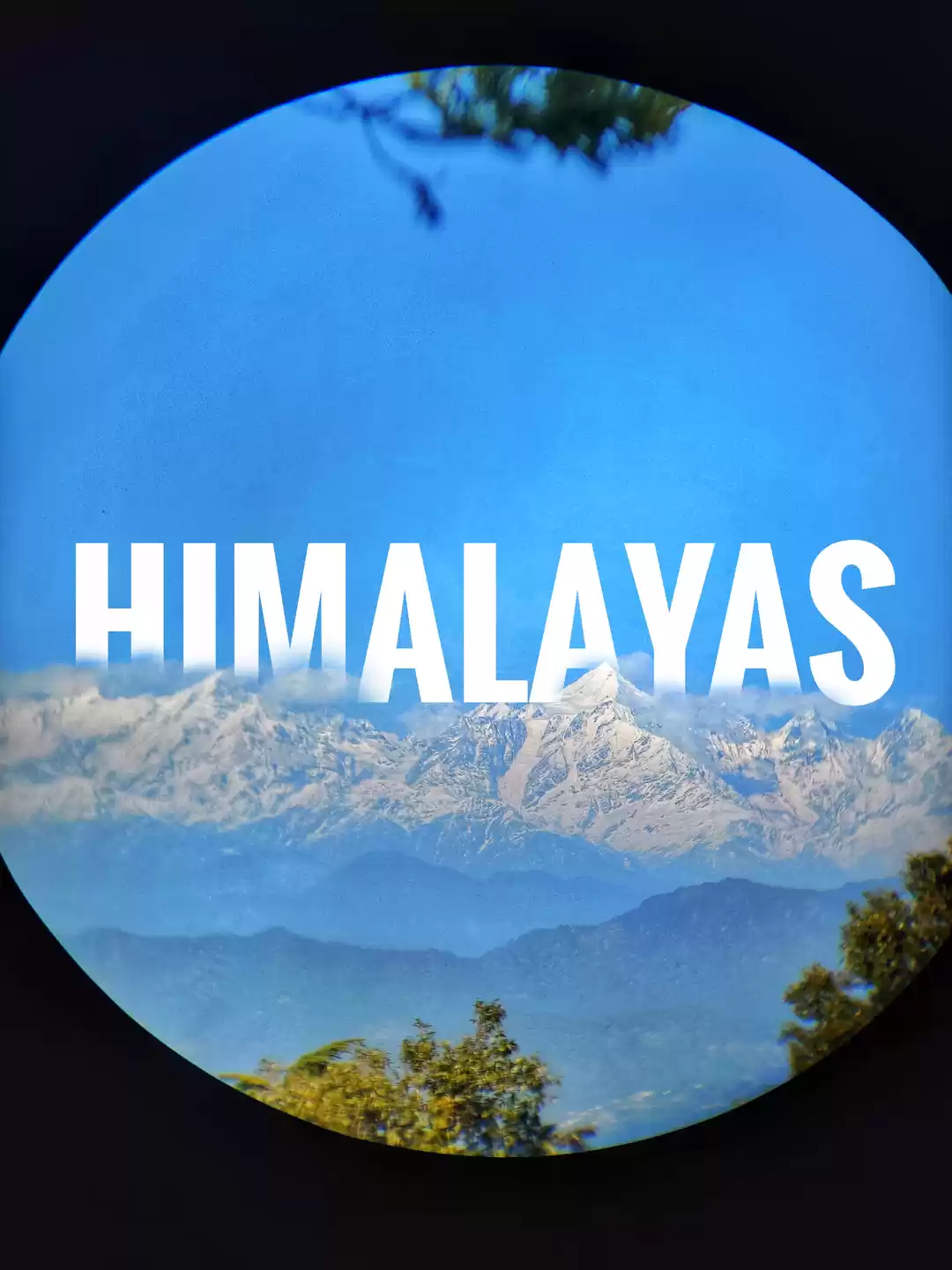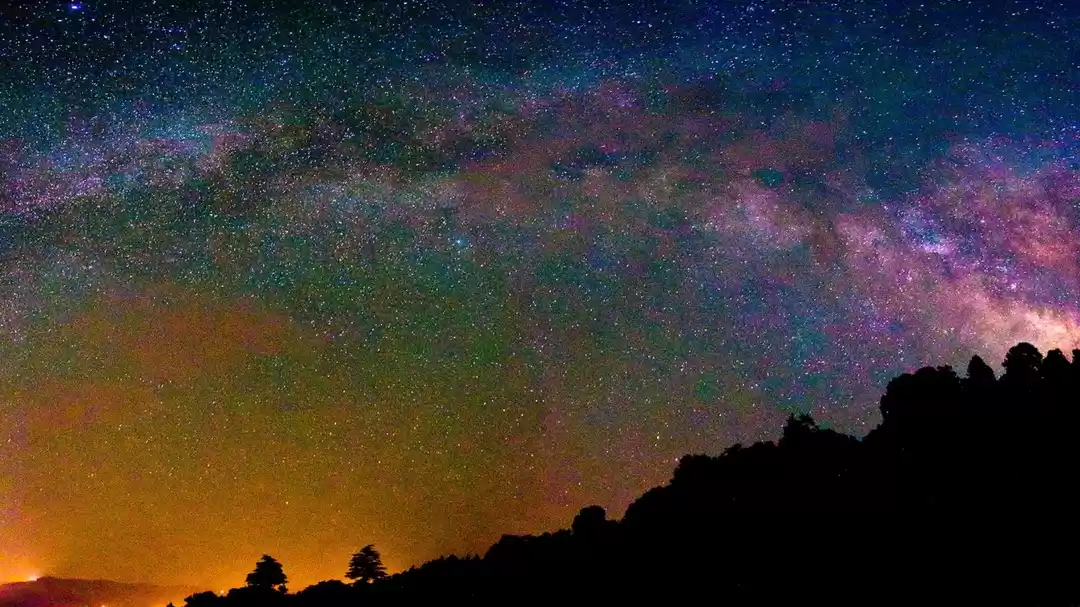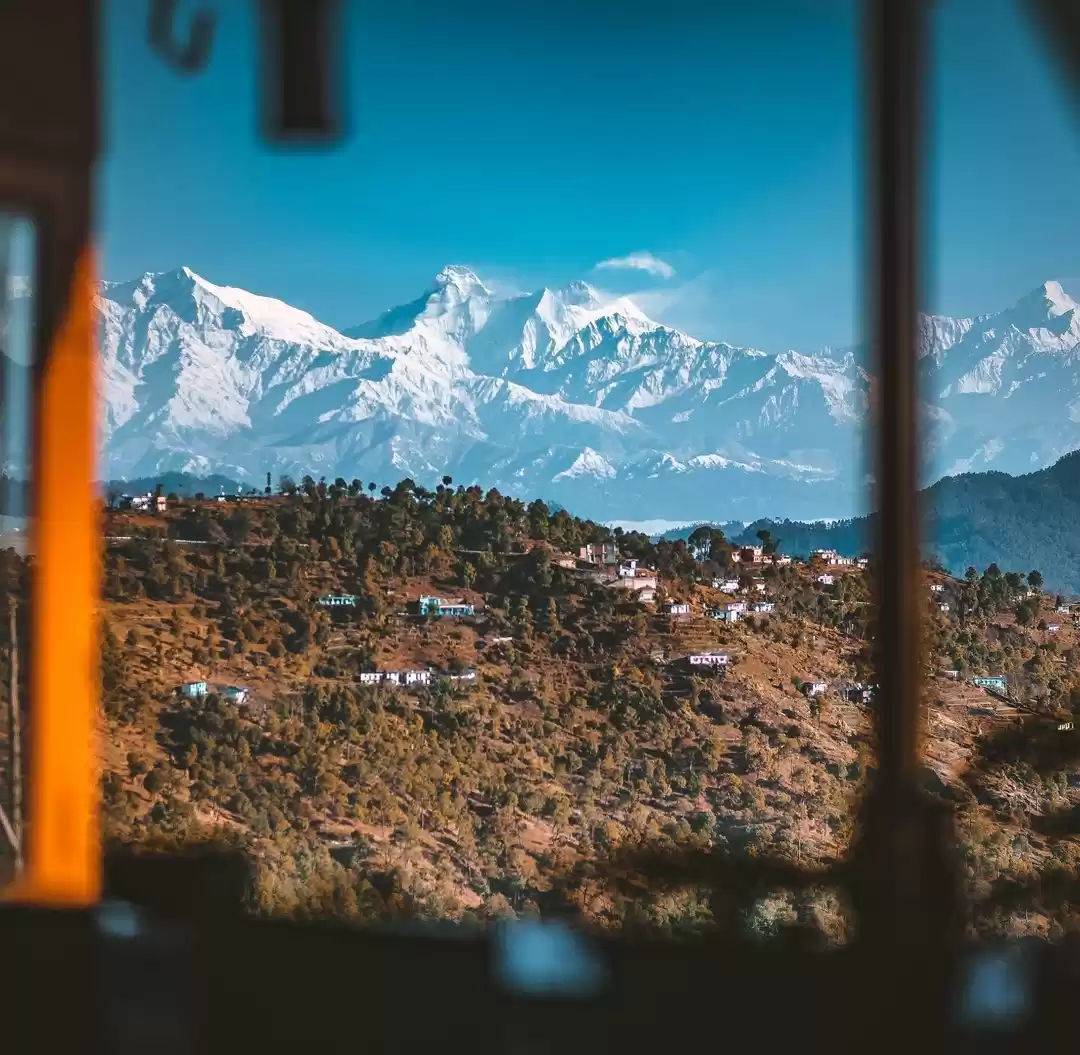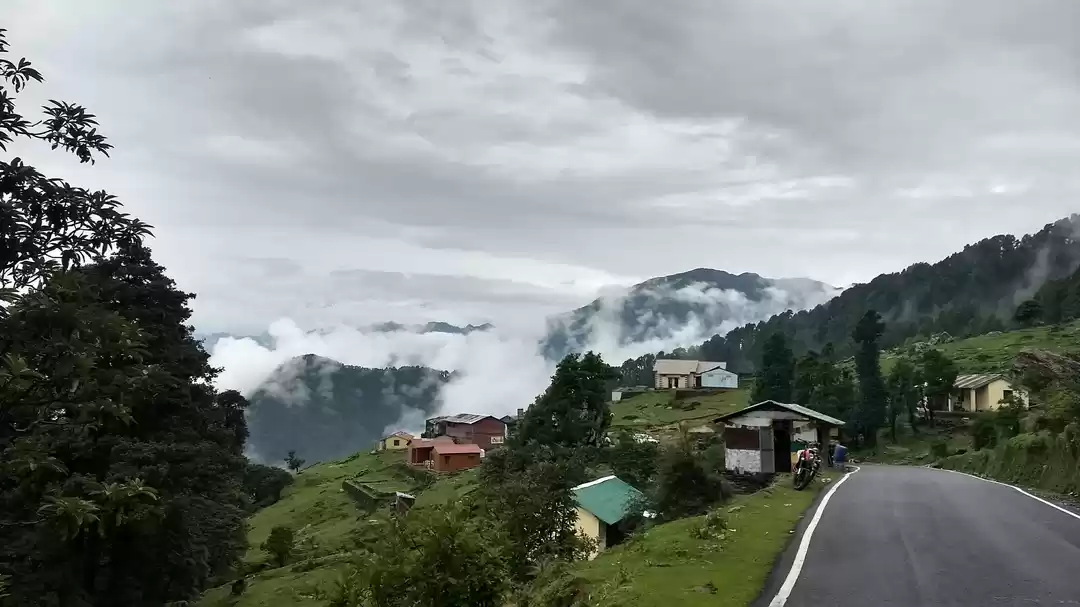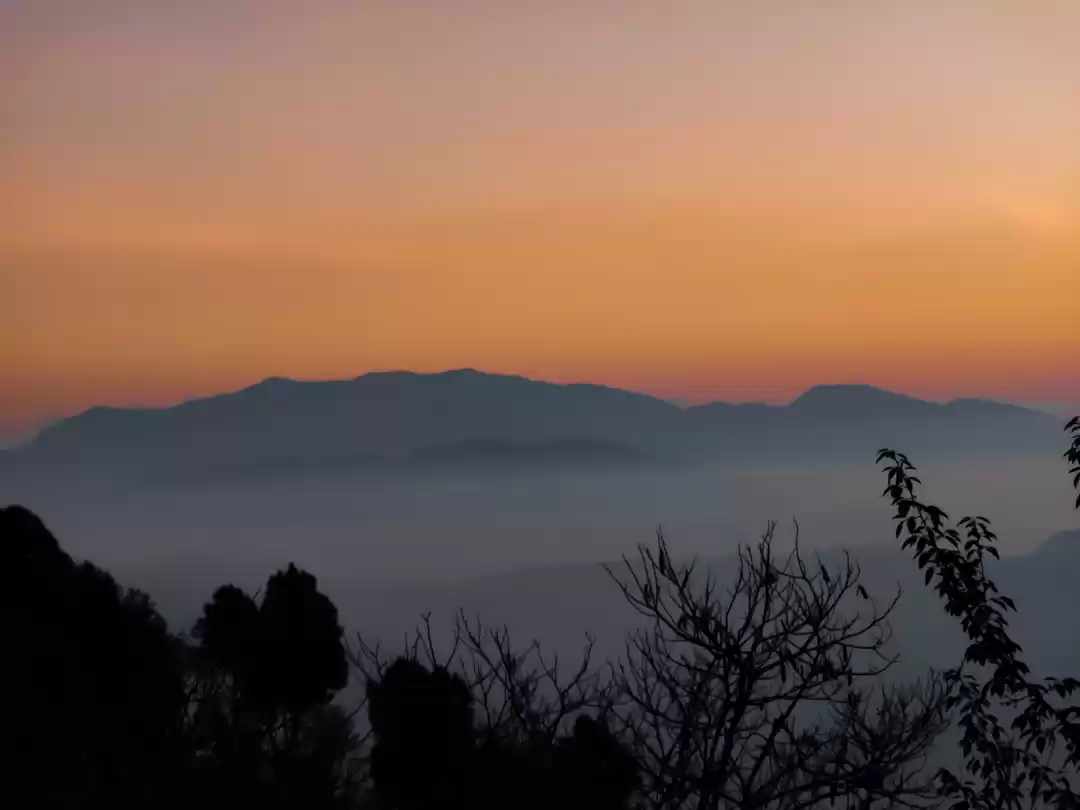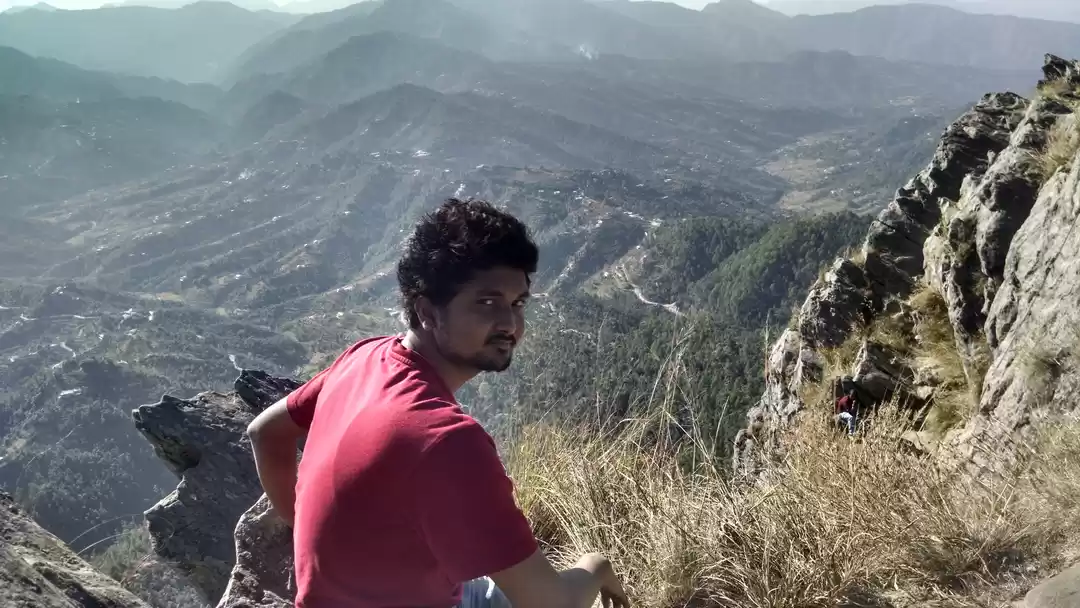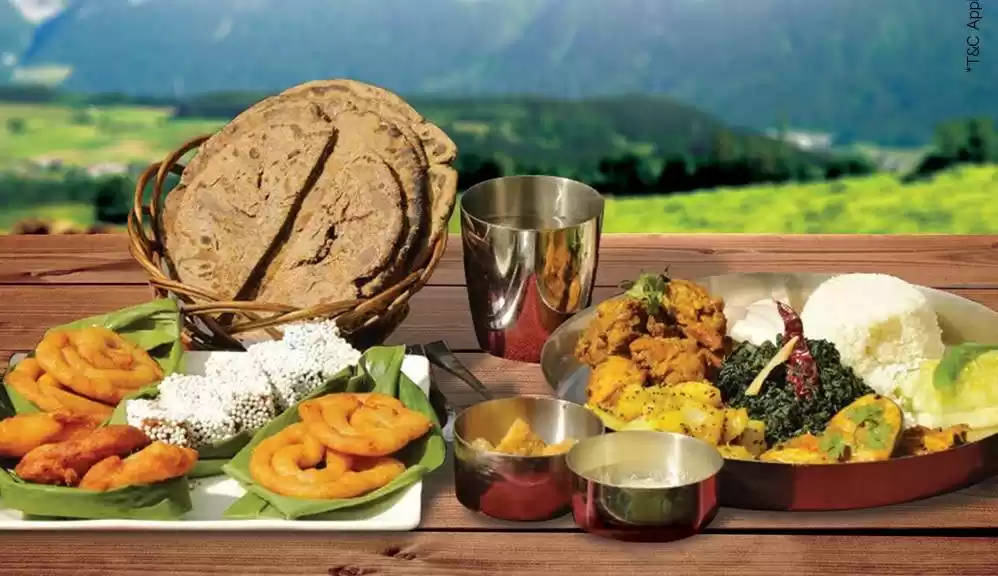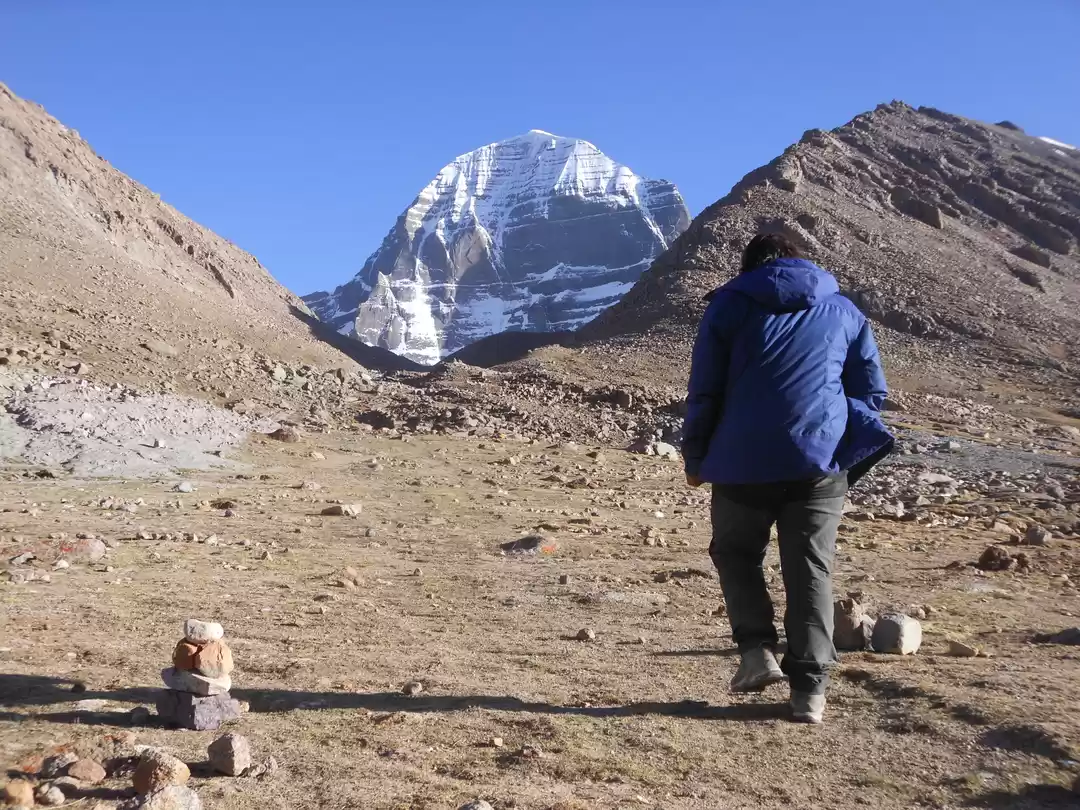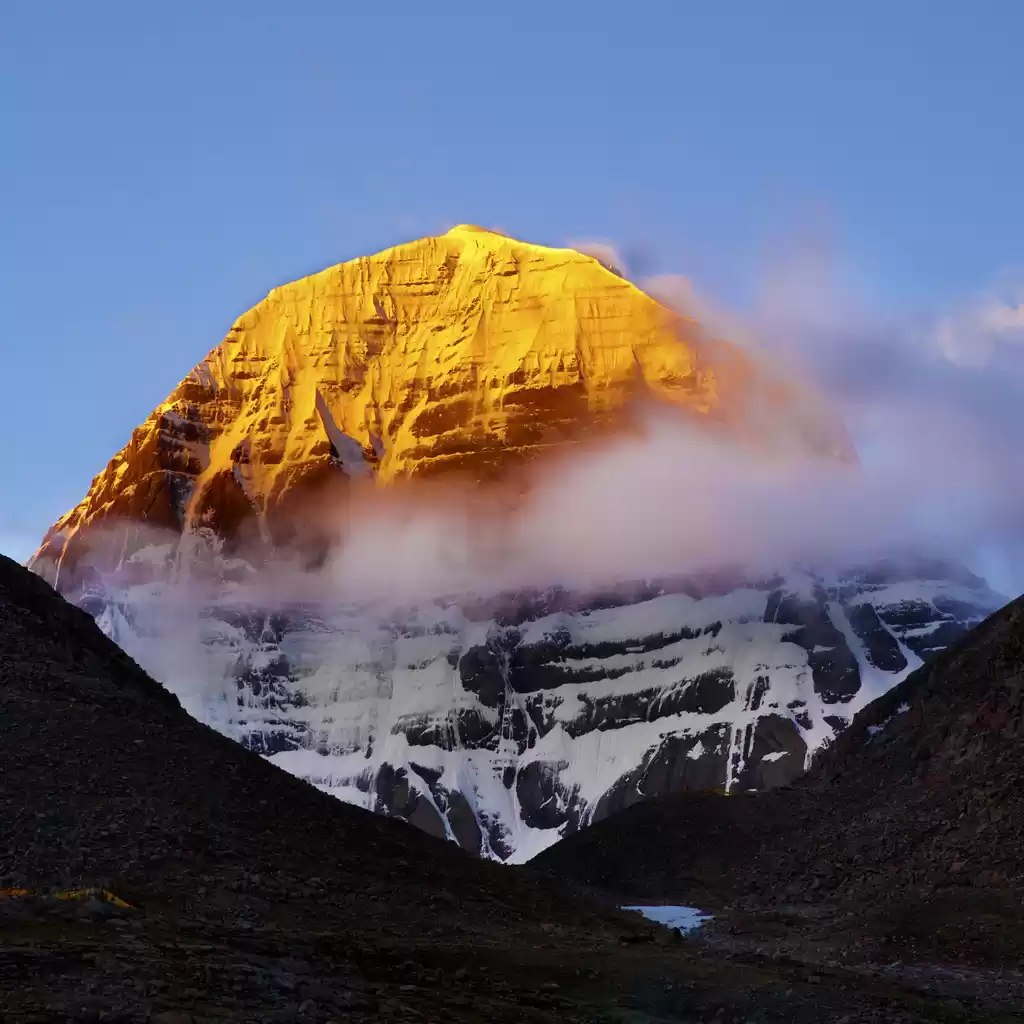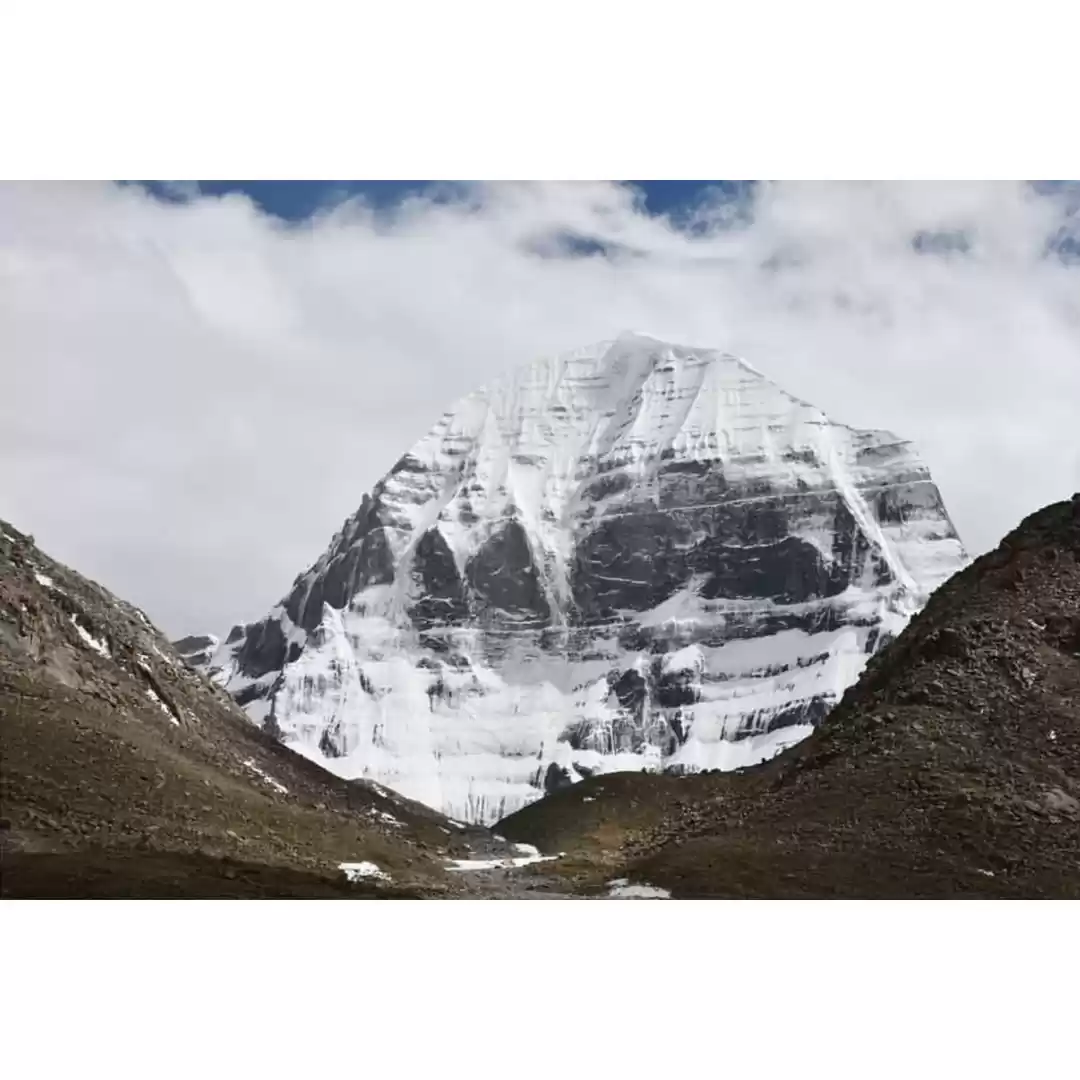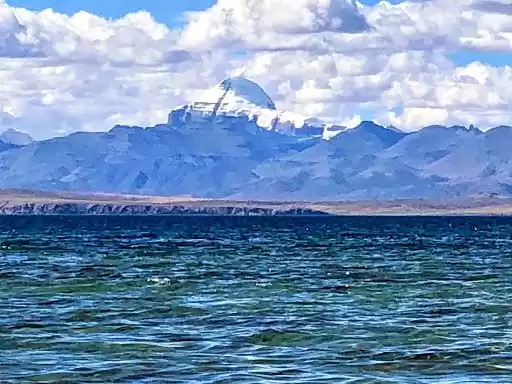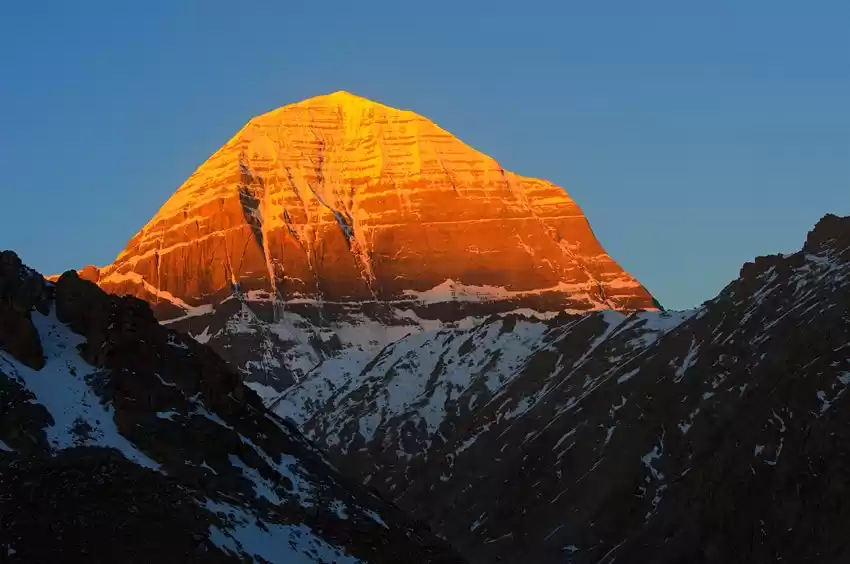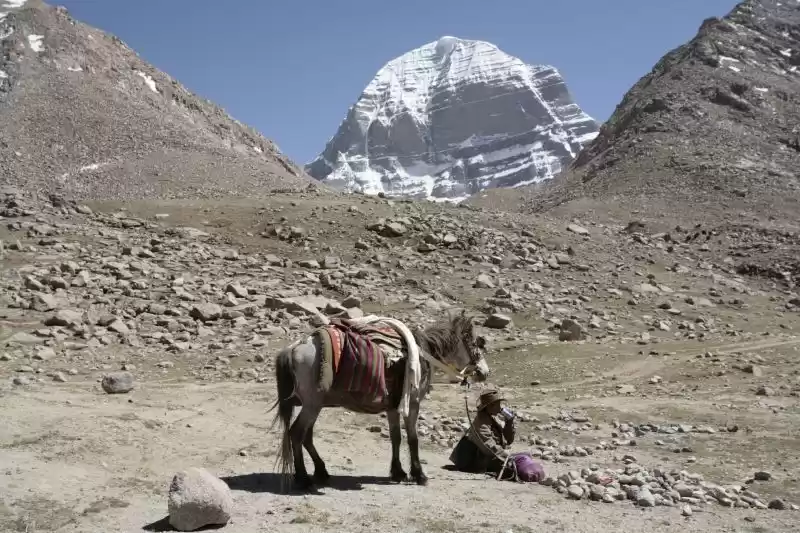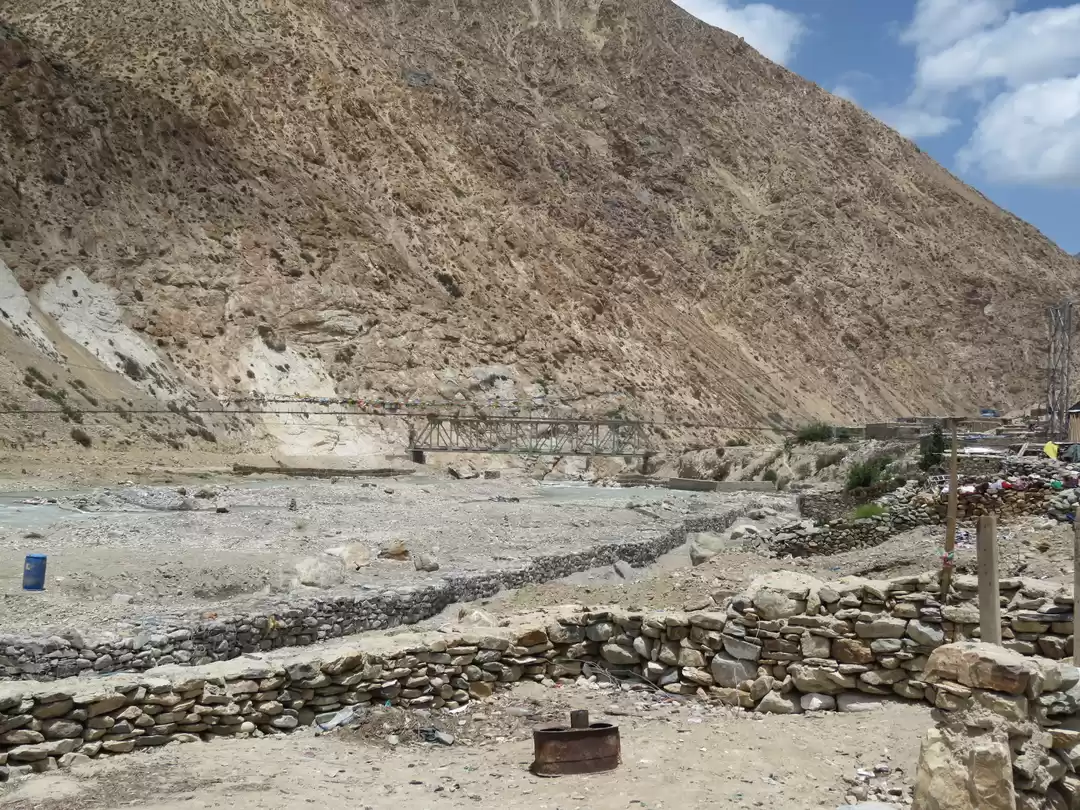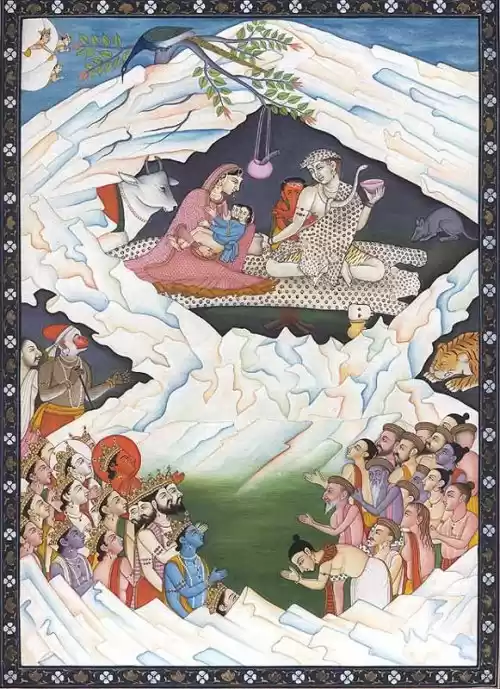





For the Indians the Himalayas hold a special significance. These beautiful, formidable ranges behold a sense of belonging, of the genesis of all there is as the topography in itself hinting at it being the very point of origin, as for the Hindus the almighty Lord Shiva had resided here once on Mt.Kailash or Mt. Kailas (Tibetan: Gang Tise or Gang Rinproche, Chinese: Gangdisi Shan) which is a striking peak situated in the Himalayan mountains of western Tibet. Mount Kailash rises to 22,028 feet (6,714 m) in one of the highest and most rugged parts of the Himalayas. Made of black rock, the symmetrical peak has a distinctive diamond-like shape with four steep facades. The south face has a vertical gash across its horizontal layers, creating the appearance of a swastika - an ancient symbol of good luck in this part of the world. According to a description in the Puranas, Mount Kailash's four faces are made of crystal, ruby, gold, and lapis lazuli; it is the pillar of the world; rises 84,000 leagues high; is the center of the world mandala; and is located at the heart of six mountain ranges symbolizing a lotus. From it flow four rivers, which stretch to the four quarters of the world and divide the world into four regions.
For the Tibetan Buddhists the Kailash is the home of the Buddha Demchok (also known as Demchog or Chakrasamvara), who represents supreme bliss. They also say it was on this sacred mountain that Buddhism displaced Bön as the primary religion of Tibet. For in Jainism, Kailash is known as Mount Ashtapada and is the site where the founder of their faith, Rishabhadeva, attained liberation from rebirth. For Bon, the religion which predates Buddhism in Tibet, the mountain is believed to be the abode of the sky goddess Sipaimen.
Hindus believe that The Lord Shiva lived in the Himalayas at Mount Kailash with his wife Parvati. Mythically he graced the earth in a place known as ‘Shambhala’, a place somewhere deep in the Himalayas, beyond the beyond and a place not accessible to mortals.. The Mount Kailash is the ultimate pilgrimage for the few chosen ones who get a chance to usurp in the magic and feel the ecstasy and sheer engulfing, overwhelming emotions at the very site of the holy mountain ! Many people have described the darshans of Mount Kailash as ‘ an indescribable feeling of utter amazement’ and a ‘freeze in time’ , an ‘overwhelming flow of emotions’ expressed through tears of joy and a silent connect, having to literally pull oneself away from it. The lord’s presence on the ‘roof of the world’ at 27000 ft is almost a tangible which touches the inners of the very being!
The journey to Mount Kailash is both arduous and enduring. It is a true test of grit and faith. While the Indian and Chinese governments arrange and facilitate pilgrimages to the holy mountain every year through the ranges of Kumaon in Uttarakhand, (The management of this yatra is done by Kumaon Mandal Vikas Nigam Ltd in Indian region and Tibetan tourism agency in Tibet respectively), there is a less physical trip which can be made from the Kathmandu side. Most pilgrims begin their journey overland from Kathmandu or Lhasa. From there, they travel over the Tibetan plateau (ranging 10,000-16,000 feet in elevation) in a rented Jeep. It is a long journey with four night stops in camps, finally arriving at Darchen (elevation: 4600 m).Western visitors usually need a guide, vehicle, driver, and a military permit to visit Kailash, all of which are arranged on tours from Kathmandu or Lhasa. This short version of the tour takes 14 days.
The Longer version from the Indian side takes 31 days to complete and includes an a two step austere health screening process for the trek laid down by the Indian government to be followed post approval of applications. The trip for successful applicants is flagged off from Delhi in batches every July onwards. The trek from New Delhi in buses winds through Haldwani, Almora, Pithoragarh and culminates at Dharchula, a town nestled in a picturesque valley alongside the river Kali and bordering Nepal and known for it’s impressive Dhauli Ganga thermal project. The road further is covered in Jeeps with beautiful high peaks and numerous waterfalls especially in the rainy season upto Narayan Ashram, where motorable road ends. From here the on foot trekking starts, overall a distance of ….kms to and fro, stretching through Mangti, Gala, Malpa, Budhi, Gunji, Kalapani, Navidhang, Lipu lek pass ( 5100 mts) on the Indian side and Taklakot, Zaidi, Darchen on the Tibetan side. Places for the Parikrama are Deraphuk, Dolma pass ( 5800 mts) and Zong Zerbu. It involves ardous climbing along treacherous rocky terrains with all the elements of nature such as rain, snow, icy cold winds playing their part in the test of endurance of both the body and the mind. The trek is mostly a day affair starting at dawn and each day ending well before dusk, however at some points such as the cross over to the Chinese side along the lipu Lake, the trek starts early morning at 2 AM which is mainly to take advantage of favourable windy and weather conditions. The trip is well organised and aided by the ITBP, with adequate camping and recuperating facilities at predetermined spots.
Once the trek ends at Darchen, the pilgrimage is then made to Mansarovar, the holy lake. Stretching majestically over an extensive cradle of the Tibetan plateau and hanging at a heavenly height of 4550 mts (14950 feet). Above the sea-level, the vast expanse of the lake with a circumference of about 88 Kms. and a depth of nearly 90 mtrs covers an area of about 320 sq. kms. By far the most magnificent and thrilling of one's experience would be in winter when the whole lake freezes hard, and again in spring when the ice breaks and melts to clear blue waters. It is only the inspired poet or the divine artist with his magic colours that can, for instance, describe and represent adequately the beauty and grandeur of sunrise and sunset on the lake. The water of Mansarovar is as sweet as that of any river or of any glacial lake. The holy manas provides fine caves, camping ground and good sites to pilgrims. At certain places the site is rocky or sandy. The lake’s virgin waters reflect the sky’s colours and changes in moods with each passing moment, from the serene blue waters to a gentle turbulent grey, depicting every moment of the day in a different light and shade and the night in it’s celestial bloom, making it an experience of a lifetime. Here is where mortals are compelled to explore within, intuitively reasoning out the very reason for existence and marvelling at the compelling and unimaginable beauty of nature. It is here that nature speaks in it’s own voices and communicates, bringing to life each piece of gravel and drop of water, making every moment spent priceless. Temperatures dip to almost unbearable proportions but still it becomes compelling to take a holy dip in the water and cleanse all that which is polluting for the body and soul within. The other water body here is the Rakshas Tal, which is considered inauspicious by Hindus and Buddhists. There are no Monasteries around its 115-km perimeter, as opposed to several along the 88-km circumference of Manasarovar. Paradoxically, Rakshas Tal receives the waters flowing down from Kailash, while Manasarovar is fed by the streams coming down Gurla Mandhata. Rakshas Tal is associated with Ravana; the belief is that he was trying to carry off Mt Kailash to Lanka. Perturbed, the gods pleaded to Ganesh. Divine intervention led to Ravana asking Ganesh to hold the mountain while the former relieved himself. This task took much longer than expected, and Rakshas Tal was born.It is held that earlier Manasarovar and Rakshas Tal were one body of water with an island in the middle. Now they are separated by a narrow isthmus of low hills, with only a thin, mostly dry channel called Ganga Chu connecting them.
The Parikrama- Pilgrims of several religions believe that circumambulating (walking around) Mount Kailash removes sins and brings good fortune. The pilgrimage around the sacred mountain is called the Kailash Kora. It is said that one trip around the sacred mountain will wipe away all the sins (bad karma) of one's current lifetime; 108 revolutions will remove the sins of all one's lifetimes and bring salvation from reincarnation (Moksha). Alternatively, pilgrims who complete one circumambulation of Kailash and bathe in the frigid waters of Lake Mansarovar will also bring salvation.
The rugged path around Mount Kailash is 52 kms long, following a blue mountain stream much of the way. Altitudes range from 15,000 feet at the start to 19,000 feet at the Dolma Pass. The circumambulation is made in a clockwise direction by Hindus and Buddhists but counterclockwise by followers of the Jain and Bön religions. A typical journey lasts about three days around Mount Kailash from the city of Darchen, aiming for Derapuk Monastery on the first night, crossing Dolma La Pass and arriving at Zutrulpuk Monastery the second night, and finally returning to Darchen on the third day but some try to earn extra merit by completing the entire walk in a single day. Braving the uneven terrain, high altitudes and variable weather, these hardy souls can complete the trek in about 15 hours. The trek can be made with the help of ponies and batches are well equipped with rations and adequate height tolerating clothing and equipment. The parikrama is itself split in to two, the outer parikrama or the one which all undertake and the inner Parikrama, which is more time consuming and extremely arduous and not open to all. The Mountain in itself is in accessible, surrounded by rocky hillocks on all sides and remaining aloof and tall amongst all it glory. All in all there are a lot of breath taking pictures available on the net and with those who visited, but no picture has been able to capture the true glory of the whole topography or the pull effect it has on living beings. It is as if in trance that the whole journey unfolds, opening up closed cerebral pathways and for ever leaving an impact on the lives of all those who have gone through it.
The way back is exactly from the same route and it takes 8 days to reach Dharchula, from where buses again bring the pilgrims back to New Delhi for culmination of a lifetime experience with the yearning of a repetition yet just one more time. Batch mates have generally been known to share a lifetime bond with each other, none in a position to describe the experience in it’s entirety or intensity. The impact of the trip is such that it takes time to adjust back to normal city life, however having left a lasting and permanent impression on each individual. Special mention is made here for a select band of individuals, who have established an eternal link with the holy place, having made numerous trips year after year and yet having the penchant to continue to do so until the body and life circumstances permit. In their words it is an addictive relationship with the holy place, both with its mystic and natural beauty, resulting in it’s calling! Every time it is a new experience, unfolding facts and facets not exposed to on the preceding trip. Such is the sacred value of the Kailash Mansarovar yatra that people greet yatris with folded hands whenever passing through a town, extending loads of hospitality, arranging small get togethers and cultural shows at some points
Remember, it’s not just the destination, but also the yatra itself that is part of this incredible experience. Thousands have trod on this path before, in less opportune circumstances. The Kailash Manasarovar Yatra becomes the high point of one’s life — things change for the better on their own after returning, spiritually uplifted and physically in better shape. It remains an experience that you want to share in its minutest details but when it comes to narrating there is a sense of calmness and silence and almost a vacuum as to where to start or finish. The intensity remains within and forever and of course a sense of accomplishment prevails within. A dream, a purpose fulfilled and a profound feeling of gratitude to the almighty for having given the chance to witness in person his abode and the holiest of places on mother earth.




